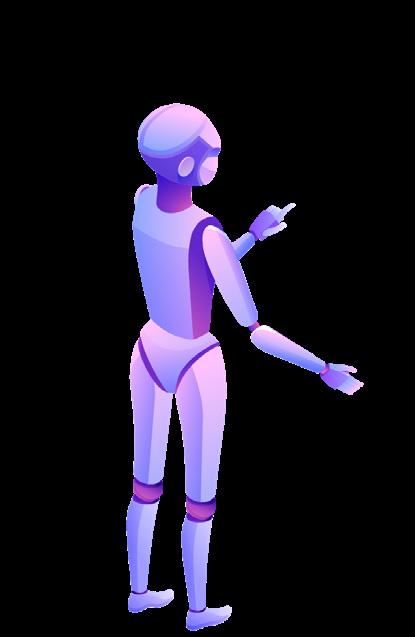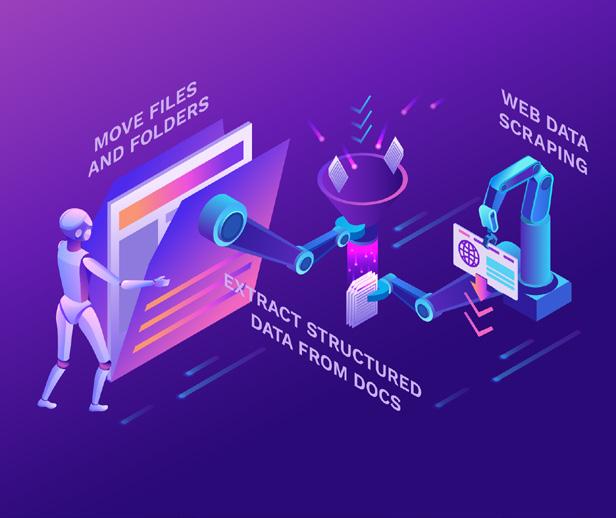
5 minute read
Digital Transformation
THE COVID-INSPIRED DIGITAL WORKPLACE:
ONE YEAR IN
Advertisement
We look at the changes wrought by COVID-19, and why the advent of the digital workplace is opening up changes in not just where but how we work
KALYAN KUMAR
CVP AND CTO, IT SERVICES, HCL TECHNOLOGIES
The ongoing COVID-19 pandemic has brought changes that, prior to its impact, many would have said to be impossible. One of the most visible of those changes is the precipitous uptake in remote working as offices closed in the face of the virus. Now, a year since many first felt its impact, it’s worth looking back at the changes COVID-19 has wrought and the future of the newly minted digital workplace.
Even once the pandemic eventually recedes, for many that change will become, to varying extents, permanent. As Kalyan Kumar, CVP and CTO, IT Services, HCL Technologies, explains: “There will definitely be long-lasting impacts from a remote working perspective, even after the pandemic’s immediate and urgent effects have eased off. Of course, there will be situations requiring face-to-face meetings occasionally, but the majority of employees will continue to work from home at least some of the time going forward.” Partly that’s down to the investment in remote working that companies have been forced to make, such as training in the various communications platforms that have risen to the fore. “Organisations must have the foundations in place to allow employees to access their workspace in any location and from any device,” says Kumar.
ADVERT PAGE MEDIA SALE
ANDREW DUNCAN
PARTNER AND UK CEO, INFOSYS CONSULTING
The persistence of remote working means companies will have to change their approach and do away with the accepted standards of just one years ago. “Organisations must also regularly review applications to ensure they’re as userfriendly as possible, because technical problems are much harder to rectify when employees aren’t all in one place,” says Kumar. As part of that, a focus on security and compliance procedures must prevail. “Traditional security solutions won’t always offer the right protection when employees are accessing data from a new location or device, so ensuring only the people who are authorised to access information can do so is vital. Ensuring all systems and devices are compliant as per the organisation’s policy is another important aspect to be dealt with while remote working continues.”
While admittedly there are downsides to working remote, both employers and employees are seeing the benefits, as Andrew Duncan, Partner and UK CEO at Infosys Consulting, explains. “In 2021, organisations will look to create seamless working experiences regardless of employee location. Rather than considering offices vs. remote working, leaders will seek to find the best of both worlds, creating more flexible hybrid models of co-located and distributed work. These new work practices
There are a raft “WHEN WE HAVE FREED THE KNOWLEDGE WORKERS FROM THE MUNDANE, WE of technologies on hand to assist human efforts.”Cognitive process automation (CPA) is of particular CAN LOOK AT AUTOMATING note,” says HCL’s Kumar, “and is one of the most WHAT REMAINS” sought after technologies that emulates human intelligence to solve
NEIL KINSON CHIEF OF STAFF, problems and automate processes. CPA has
REDWOOD SOFTWARE been in significant demand of late, and has seen considerable will prove their worth in multiple ways, implementation across different verticals from increased resilience to a better work- and domains.” Taken together, emerging life balance for employees. For example, technologies can supercharge human a virtual working model can offer a unique efforts in almost all areas of the workplace. opportunity to tap into different pools “There’s also AI, machine learning, natural of talent, which may have traditionally language processing (NLP) and the cloud. been harder to access due to location and geography restrictions.”
That rapid digital transformation of where we work has increased the pace of progress in how we work too, with automation a particular area of focus. How to succeed with Hyperautomation according to Deloitte:
Far from software and hardware robots taking our jobs, instead the emphasis is 1 | Define the purpose and Identify on doing away with the drudge work and the use cases with expected key unleashing our collective productivity. business outcomes in terms of
“If you look at the reality of the day to day revenue, expenditure, work in many organisations, the value that and business risks people can deliver is not constrained by 2 | Optimize the existing their lack of intellectual capacity. It is that processes and standardizing they are drowning in tedious and repetitive data inputs tasks that prevent them from being their and decision logic best selves,” says Neil Kinson, Chief of Staff, 3 | Identify relevant
Redwood Software. “The focus should be Hyperautomation tools on freeing the people from the things that 4 | Implement process automation automation can do better, so they are free with AI as augmented intelligence. to do the things people do best.”

I say these all in one breath as it’s difficult to separate them. These technologies form a key pillar for improving employee productivity, and enable the training of machines to complete existing mundane tasks, or to augment the business processes that humans execute.”
Achieving that vision is not simply about implementing technology such as robotic process automation (RPA), but also trusting workers. “The ultimate goal should be equipping your people with the best information and analysis such that they can make the best-informed business decisions,” says Kinson. “When we have freed the knowledge workers from the mundane, we can look at automating what remains, but few organisations have yet reached this level.” Going forwards, new technologies have the potential of combining with new cultural approaches to create a truly digital workplace, with such an approach sometimes being known as hyperautomation. “A digital workforce is about more than just replicating how tasks are completed; it’s about thinking strategically about how automation can be looped into the process, so that humans can do their jobs in the quickest, most efficient way possible,” says Kumar.











